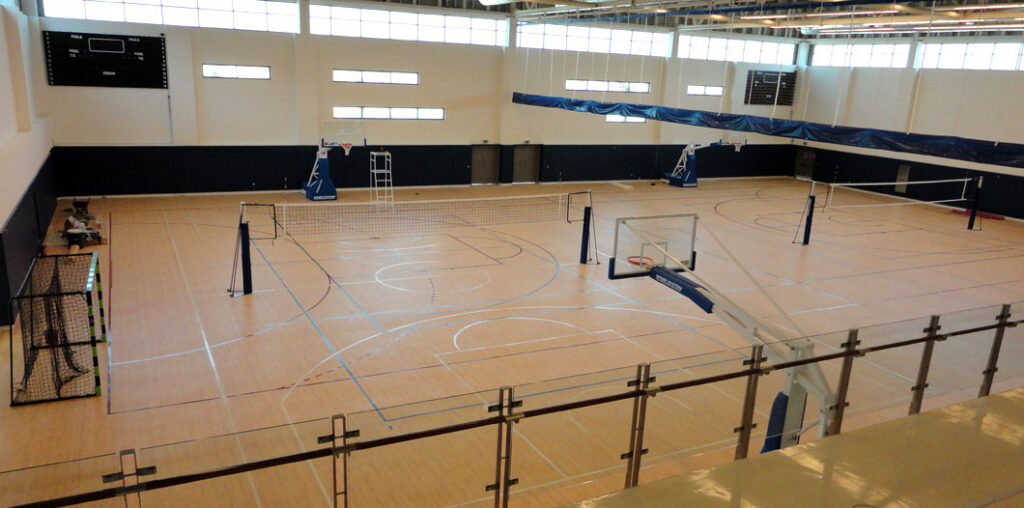Understanding Rubber Flooring for UAE Climates
Rubber flooring is a popular choice for both indoor and outdoor spaces in the UAE due to its durability, safety, and resistance to extreme temperatures. However, there are significant differences between indoor and outdoor rubber flooring, especially when considering factors like weather resistance, maintenance, and longevity. Choosing the right type of flooring depends on the specific environment and usage. Whether you’re looking for indoor outdoor rubber flooring suppliers UAE or exploring different materials, it’s essential to understand the key distinctions between these options.
What is Rubber Flooring?
Rubber flooring is a versatile, durable, and resilient flooring material made from natural or synthetic rubber. It is widely used in gyms, playgrounds, commercial spaces, and even residential properties. Rubber flooring is known for its impact absorption, slip resistance, and noise reduction capabilities, making it ideal for high-traffic areas.
Types of Rubber Flooring
Rubber flooring is available in different forms, including:
- Rubber tiles – Modular pieces that fit together, commonly used for gyms and playgrounds.
- Rubber rolls – Large sheets used for commercial spaces and industrial applications.
- Rubber mats – Portable flooring solutions ideal for temporary or movable setups.
- Poured rubber – Seamless flooring primarily used for playgrounds and outdoor sports areas.
Understanding these types helps determine the best option for specific indoor or outdoor applications in the UAE.
Key Differences Between Indoor and Outdoor Rubber Flooring
Weather Resistance
One of the biggest differences between indoor and outdoor rubber flooring is weather resistance. The UAE experiences extreme temperatures, with summer temperatures reaching above 45°C. Outdoor rubber flooring must withstand:
- Intense heat – Outdoor rubber surfaces are designed to resist UV rays and high temperatures without cracking or fading.
- Humidity and sand – Materials used for outdoor flooring are more resistant to moisture, sand accumulation, and wind damage.
Indoor rubber flooring, on the other hand, does not need as much UV or heat resistance but should still be durable enough to handle high foot traffic.
Material Composition
Outdoor rubber flooring is often made with additional UV stabilizers and weatherproofing agents to prevent deterioration from sun exposure and temperature changes. Some key features of outdoor rubber flooring include:
- UV-resistant coatings to prevent color fading
- Anti-slip surfaces designed to stay safe even in wet conditions
- Heavier density to withstand external elements
Indoor rubber flooring, in contrast, is typically softer, with more cushioning and noise-reduction properties. This makes it ideal for gym floors, play areas, and office spaces.
Thickness and Durability
Outdoor rubber flooring is usually thicker and denser to handle heavy use and weather conditions. Common outdoor applications include:
- Playgrounds
- Sports courts
- Outdoor gyms
- Parking areas
Indoor rubber flooring tends to be thinner but offers sufficient durability for residential and commercial spaces. Some common indoor applications include:
- Fitness centers
- Office spaces
- Retail stores
- Schools and daycare centers
Installation Methods
The installation process varies based on indoor and outdoor environments. Outdoor rubber flooring typically requires more preparation, including:
- Proper subflooring to ensure drainage
- Adhesive solutions resistant to heat and humidity
- Modular designs for expansion and contraction in response to temperature changes
Indoor rubber flooring, however, can often be installed with simple interlocking tiles or roll-out solutions, requiring minimal preparation.
Maintenance Requirements
Outdoor rubber flooring in the UAE requires regular cleaning due to sand, dust, and extreme temperatures. Common maintenance practices include:
- Regular sweeping and washing to remove dust
- Applying UV protectants to prevent fading
- Ensuring proper drainage to avoid water accumulation
Indoor rubber flooring is generally easier to maintain, requiring:
- Regular vacuuming and mopping
- Avoiding harsh chemicals that can damage the surface
- Using protective mats in high-traffic areas to prolong lifespan
Choosing the Right Rubber Flooring for UAE Environments
Best Applications for Indoor Rubber Flooring
If you’re looking for indoor outdoor rubber flooring suppliers UAE to install rubber flooring indoors, consider the following spaces:
- Home Gyms: Provides cushioning and absorbs impact during workouts.
- Commercial Buildings: Ideal for office spaces and retail stores for its noise reduction and slip resistance.
- Educational Institutions: Common in schools and daycare centers for added safety and durability.
Best Applications for Outdoor Rubber Flooring
Outdoor environments in the UAE require specialized rubber flooring that can withstand harsh weather conditions. Some ideal applications include:
- Playgrounds: Provides shock absorption for children’s safety.
- Sports Fields: Used for running tracks and outdoor courts.
- Pool Decks: Offers slip-resistant surfaces for added safety.
- Parking Areas: Durable rubber surfaces protect vehicles and pedestrians.
Factors to Consider When Selecting Rubber Flooring in the UAE
When choosing rubber flooring, consider the following factors to ensure the best performance:
Climate Compatibility
Outdoor flooring must be resistant to extreme heat, UV rays, and sandstorms. If selecting for an indoor space, focus on impact absorption and noise reduction.
Safety and Comfort
For spaces like gyms and play areas, prioritize flooring with good cushioning and shock absorption. Outdoor areas need anti-slip properties to prevent accidents.
Longevity and Durability
High-traffic areas require thicker, more durable flooring. Outdoor spaces need UV and weather-resistant options, while indoor spaces benefit from softer, cushioned surfaces.
Maintenance Needs
Low-maintenance flooring is ideal for busy environments. Outdoor spaces require more upkeep to prevent fading and damage, while indoor rubber flooring is easier to clean and maintain.
Budget Considerations
Cost varies based on material, thickness, and installation requirements. Comparing options from indoor outdoor rubber flooring suppliers UAE can help you find the best price-quality balance.
Conclusion
Both indoor and outdoor rubber flooring provide numerous benefits, but selecting the right type depends on specific environmental conditions and usage needs. In the UAE’s harsh climate, outdoor rubber flooring must withstand extreme heat, UV exposure, and sand, while indoor flooring prioritizes comfort and noise reduction. Whether for residential, commercial, or recreational use, choosing the right flooring solution ensures long-lasting durability and performance. Exploring options from indoor outdoor rubber flooring suppliers UAE will help you find the best flooring to meet your requirements.


